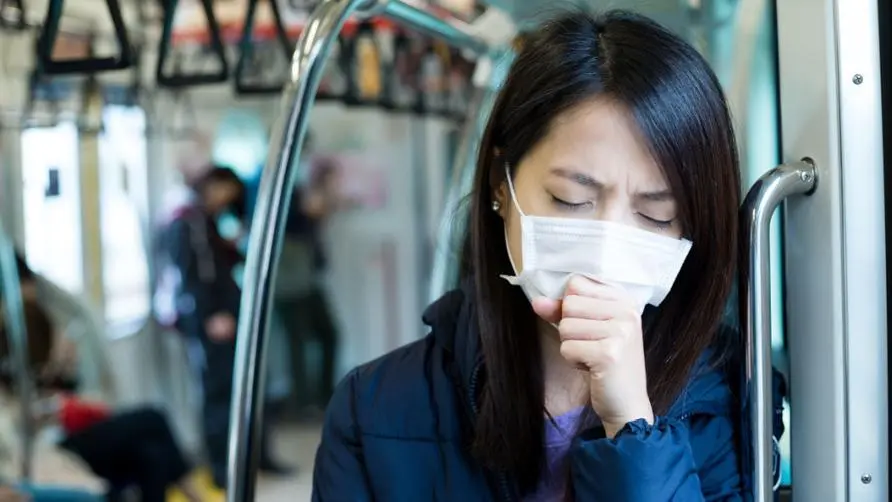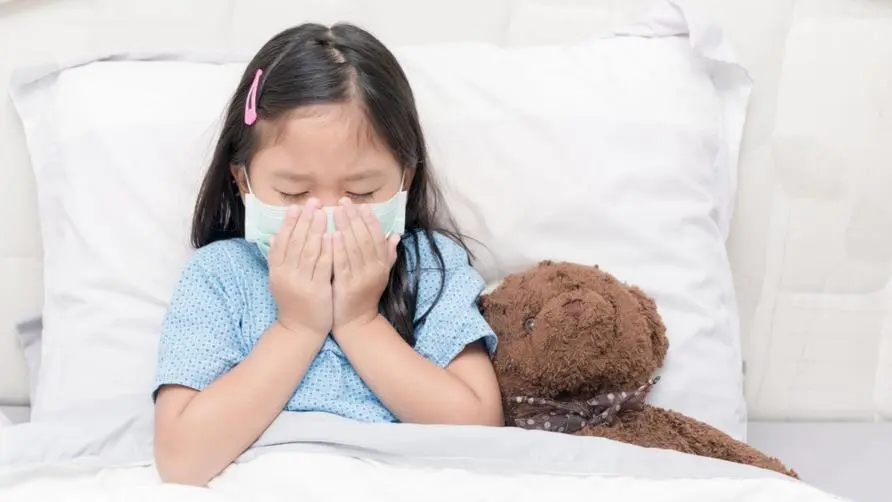Will the Mycoplasma pneumoniae epidemic break out at the end of the year? Intensivists reveal "four major characteristics": fear of being infected without knowing it

Don’t be in a hurry to collect masks and hand sanitizer! Recently, a large-scale infection with Mycoplasma pneumoniae has occurred in northern China, and many cases of infection have also been reported in Taiwan. Will Mycoplasma take over from the new coronavirus and influenza virus and become the main threat of winter epidemics? Dr. Huang Xuan, an expert in critical care medicine, said in a social post that Mycoplasma has a slow growth time and a long incubation period. It remains to be seen whether a new wave of infection will form.
The incubation period can last up to 1 month! Why did Mycoplasma pneumoniae occur only after the epidemic?
“Why has it been so long since the COVID-19 epidemic that mycoplasma pneumonia is now causing a major outbreak? It is precisely because this bacteria is like a ‘sloth’. Not only does it grow slowly and has a long incubation period, but it often takes a long time to spread before it causes a major outbreak. Large-scale epidemic!” The obvious symptoms of Mycoplasma pneumonia include common cough, fever and sore throat, but the cough may last for weeks or even months.
Dr. Huang Xuan explained that from 2020 to 2023, the world implemented a series of non-pharmaceutical intervention (NPI) policies to prevent COVID-19, which also resulted in a decrease in the transmission rate of mycoplasma and other pathogens. However, as epidemic prevention policies are relaxed and people no longer abide by epidemic prevention regulations, it is easy for the virus to break out at this moment and make up for the number that was not prevalent in the past. This phenomenon is called “immunity debt.”
Compared with “Respiratory Fusion Virus (RSV)”, which has an incubation period of only 2-8 days, the incubation period of Mycoplasma infection is about 1-3 weeks; therefore, RSV also precedes Mycoplasma, and in the post-covid era (Post covid era) ) outbreak, Mycoplasma has followed closely behind, and it is only recently that large-scale cases have begun to appear. However, Dr. Huang Xuan also pointed out that Mycoplasma pneumonia is a common disease of the respiratory system. Even if cases of infection occur every day, there is no need to panic over it.
“Children’s white lung” is not only related to Mycoplasma? Intensivist reveals “4 characteristics”: being infected without knowing it
As for the global influx of “children with white lung”, is it related to the outbreak of mycoplasma? Dr. Huang Xuan explained that it is not surprising that mycoplasma is complicated by “white lung”. According to local research statistics in Taiwan, mycoplasma and “white lung” account for about 30% of community pneumonia in children, and 50% of children over 5 years old. More than %, but in adult community pneumonia, Mycoplasma complication “white lung” only accounts for 5-12%. However, according to WHO investigations, the “influenza-like” epidemic that broke out in China may be related to a variety of viruses such as adenovirus, RSV virus, Mycoplasma pneumoniae or influenza virus.
Dr. Huang Xuan explained that Mycoplasma infection has four major characteristics: low morbidity rate (10% complicated by pneumonia), high chance of spontaneous recovery (90%), low fatality rate (0.1%), and high contagiousness (longest incubation period) up to about 1 month). Even though its growth time is slow and its incubation period is long, its transmissibility is quite high. As long as there is close contact with a patient, there is a 60-90% chance of infection.
“The infectious period can range from 3-8 days before symptoms appear to 14 weeks after treatment, so it is very difficult to prevent infection. So you and I may have been infected by Mycoplasma unknowingly. How many times!”
Can Mycoplasma cause bronchitis in children? Symptoms of cough and fatigue can last up to 1 month
In fact, Mycoplasma pneumoniae is not a notifiable infectious disease. According to the Taiwan Centers for Disease Control’s Epidemic Report on November 7, which published the number of emergency room visits for Mycoplasma pneumonia from 2015 to 2023, it was found that people in Taiwan are infected with Mycoplasma pneumoniae throughout the year. , the number of emergency medical visits per week is around 100, and there are 2,953 cases from the first week to the 43rd week of 2023 (emergency numbers only).
According to public information from Taiwan Centers for Disease Control, Mycoplasma infections are common every year, but are more common in summer, autumn and rainy seasons. Both children and adults may be infected with Mycoplasma, and a small number of patients may also develop pneumonia and aseptic pneumonia. Serious complications such as encephalitis or myocarditis. Most Mycoplasma infections are “asymptomatic infections” and the bacteria can survive in the human respiratory tract for up to 1-3 weeks.
Generally speaking, the symptoms caused by Mycoplasma pneumoniae are mild, last for about 1 week or even 1 month, and can cause several types of infections. The most common form of the disease is “bronchitis”, especially in children. Common symptoms are sore throat, fatigue, fever and cough that can last for weeks or even months. It is estimated that about 10% of people will get pneumonia. Common symptoms are mucus, fever and chills, difficulty breathing, chest pain and fatigue.
Fever is less common in children younger than 5 years old, but symptoms such as wheezing, vomiting or diarrhea may occur. A small number of patients will have serious complications such as severe pneumonia, asthma attacks, encephalitis (swelling of the brain), hemolytic anemia, abnormal kidney function, and skin diseases (Stephen Johnson syndrome, erythema multiforme, toxic epidermolysis).
Mycoplasma turns patients into “walking pneumonia”? Can antibiotics treat resistant strains?
“A few patients with Mycoplasma pneumonia have been complicated by pneumonia. The chest X-ray looks very inflamed, but they can still walk around on the road, looking relaxed. We commonly call Mycoplasma pneumonia “walking” “Pneumonia” means that most people can recover on their own, and the symptoms of pneumonia are not obvious!”
Dr. Huang Xuan explained that most patients with Mycoplasma infection can recover on their own and rarely require hospitalization. However, if pneumonia has developed, doctors will usually prescribe antibiotic treatment. Generally, the first-choice drug is macrocyclic antibiotics (macrolides). Most of them can be cured after receiving treatment. Rarely, treatment fails or the condition worsens. If the fever and cough persist for a longer time, other antibiotics may be considered.
Recent studies from various countries have shown that the resistance of Mycoplasma pneumoniae to macrocyclic antibiotics has increased. For example, Japanese statistics show that it is about 6% resistant, and the United States, France and other countries have also reported that the resistance rate is about 5-10%. . Dr. Huang Xuan said that if infection with drug-resistant Mycoplasma pneumonia is suspected, alternative drugs such as tetracyclines antibiotics and fluoroquinolones antibiotics can be used to treat drug-resistant strains. This is also The reason why the mortality rate of Mycoplasma pneumonia is low (less than 0.1%)
Do everything you need to do during the COVID-19 pandemic! Doctors reveal 4 tips to prevent Mycoplasma pneumonia infection
Dr. Huang Xuan stated that medical science has proven that there will be large-scale community transmission of Mycoplasma every 3-7 years. This time it just happened to coincide with the end of the new crown pandemic, coupled with the “immune debt” effect, bringing a new wave It’s just a large-scale spread. In fact, every year, Mycoplasma pneumonia quietly wreaks havoc in communities in every corner of the world. “Most of the general public can rest assured and don’t think that people infected with Mycoplasma are equal to severe cases just because ‘white lung’ has been widely reported!”
People are concerned about the Mycoplasma pneumonia epidemic and want to know how to prevent Mycoplasma infection. Dr. Huang Xuan emphasized that Mycoplasma infection is an atypical bacterial infection spread through droplets, so preventive measures are basically the same as preventing the new coronavirus. He reminded the public to actively take the following measures:
Wear a mask: If you have respiratory symptoms (especially cough), you should wear a mask to prevent droplet transmission.
Wash your hands frequently: Wash your hands with soap and water or use alcohol-based hand sanitizer.
Avoid contact: Avoid contact with infected people and avoid sharing personal belongings.
Stay healthy: Get enough sleep, exercise appropriately and eat a balanced diet to enhance your immunity.
In addition, it is also recommended that the public actively take public-funded influenza vaccines and COVID-19 boosters. When various viruses, bacteria and other pathogens invade the human body, it will help to add an extra protective barrier. If you experience any serious discomfort, you must seek medical advice as soon as possible to clarify your condition. If you are vulnerable, Ethnic groups should also carry masks, wash hands frequently and maintain appropriate social distance.
Source:
“Mycoplasma pneumoniae infection, don’t worry too much” - Dr. Huang Xuan Dr. Ooi Hean
Why is there an outbreak of Mycoplasma pneumoniae infection? ? - Dr. Ooi Hean
Further reading:





